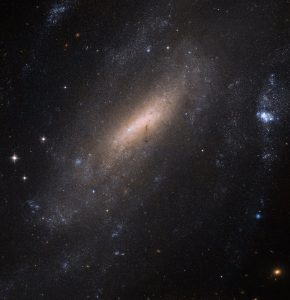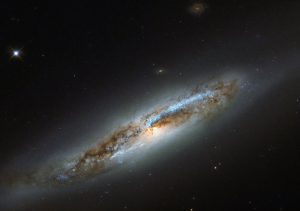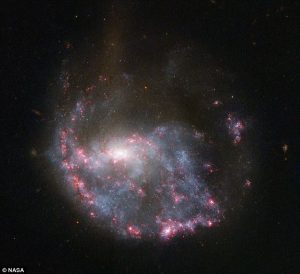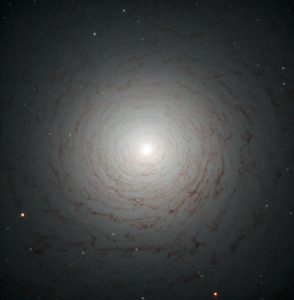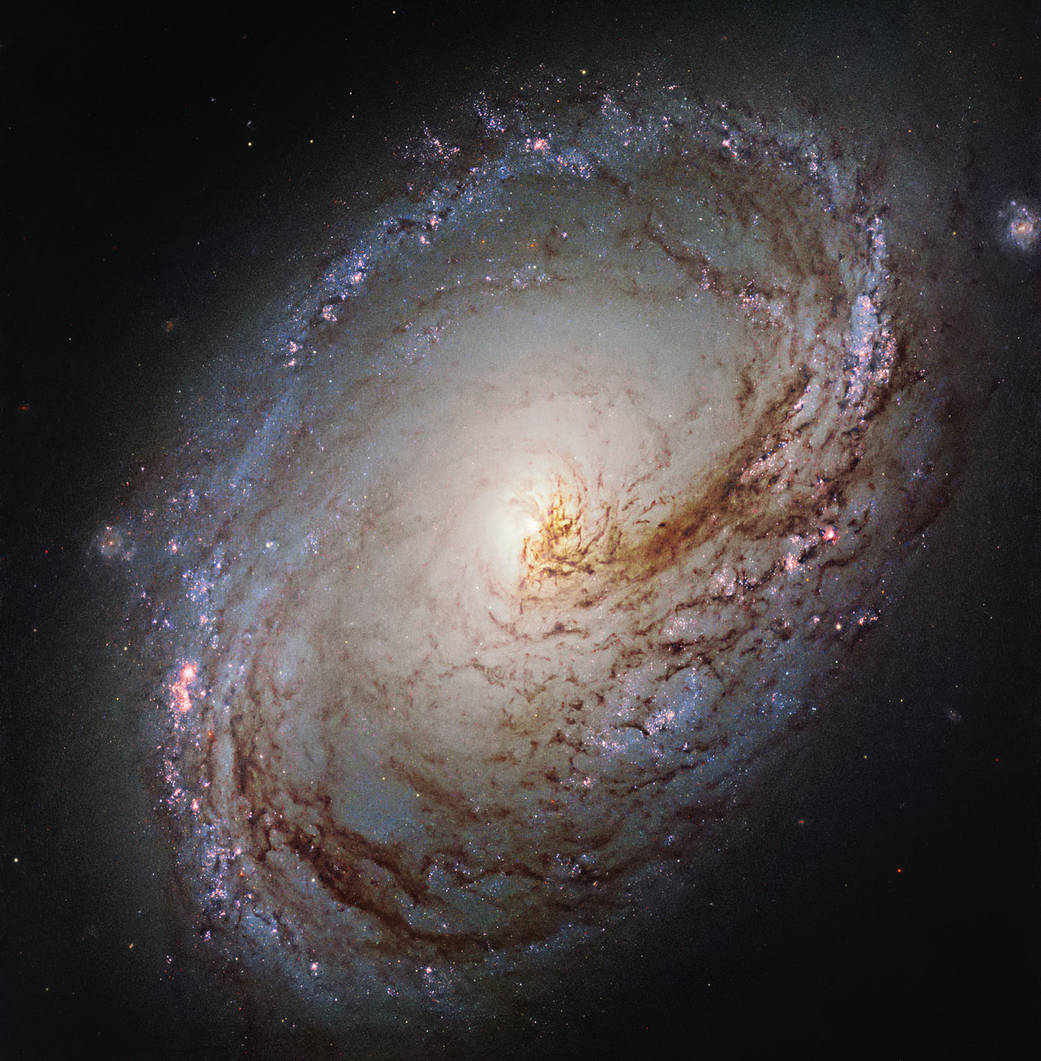galassia a spirale
Uno sguardo ravvicinato a IC 5201
Nel 1900, utilizzando un telescopio all’Osservatorio di Cape Town in Sudafrica, l’astronomo Joseph Lunt ha individuato nella costellazione meridionale della Gru questo oggetto affascinante: una galassia a spirale barrata che ora si chiama IC 5201. Continua a leggere
Metamorfosi nella Vergine
Questa volta l’obiettivo del telescopio Hubble è una galassia molto particolare, NGC 4388, soggetta suo malgrado ad una trasformazione radicale che ne ha alterato l’intera struttura, quasi si trattasse di una vera e propria metamorfosi. Continua a leggere
Un Tiro al Bersaglio Cosmico
Un cerchio quasi completo di brillanti nebulose rosate circonda una galassia a spirale in questa straordinaria immagine di NGC 922 ripresa dal telescopio Hubble. La struttura ad anello e la forma distorta della galassia a spirale sono il risultato della collisione di NGC 922 con una galassia più piccola, avvenuta circa 330 milioni anni fa. Continua a leggere
Come un Girasole
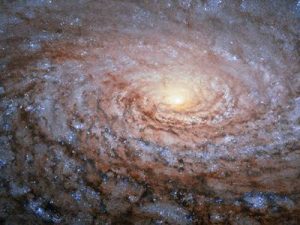 La disposizione dei bracci di spirale della galassia Messier 63, visibile in questa immagine ripresa dal telescopio Hubble, richiama alla mente la struttura nel centro di un girasole per il gran numero di segmenti di spirale che circondano il nucleo, pervasi da nubi di polvere interstellare Continua a leggere
La disposizione dei bracci di spirale della galassia Messier 63, visibile in questa immagine ripresa dal telescopio Hubble, richiama alla mente la struttura nel centro di un girasole per il gran numero di segmenti di spirale che circondano il nucleo, pervasi da nubi di polvere interstellare Continua a leggere
Uno tsunami di gas e stelle forma un “occhio” galattico
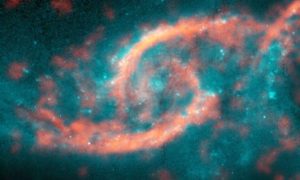 Gli astronomi utilizzando l’Atacama Large Millimeter/submillimeter Array (ALMA) hanno individuato nel disco di una galassia a spirale nota come IC 2163 un vero e proprio “tsunami” di stelle e gas generato dallo scontro tra due galassie. Quest’onda colossale di materiale, innescata quando IC 2163 ha speronato un’altra galassia a spirale chiamata NGC 2207, ha prodotto archi rilucenti di intensa formazione stellare che sembrano assumere l’aspetto di un occhio dotato di palpebre. Continua a leggere
Gli astronomi utilizzando l’Atacama Large Millimeter/submillimeter Array (ALMA) hanno individuato nel disco di una galassia a spirale nota come IC 2163 un vero e proprio “tsunami” di stelle e gas generato dallo scontro tra due galassie. Quest’onda colossale di materiale, innescata quando IC 2163 ha speronato un’altra galassia a spirale chiamata NGC 2207, ha prodotto archi rilucenti di intensa formazione stellare che sembrano assumere l’aspetto di un occhio dotato di palpebre. Continua a leggere
Una misteriosa antica spirale
Questa spettrale immagine ripresa dal telescopio Hubble rivela l’impressionante centro della galassia NGC 524. È una galassia di tipo lenticolare, uno stadio intermedio nell’evoluzione galattica tra le ellittiche e le galassie a spirale; si trova nella costellazione dei Pesci, a circa 90 milioni di anni luce dalla Terra. Continua a leggere
Nel Cuore di un Vortice Galattico
Questa immagine del telescopio Hubble mostra Messier 96, una galassia a spirale a circa 35 milioni di anni luce di distanza, nella costellazione del Leone. Continua a leggere
